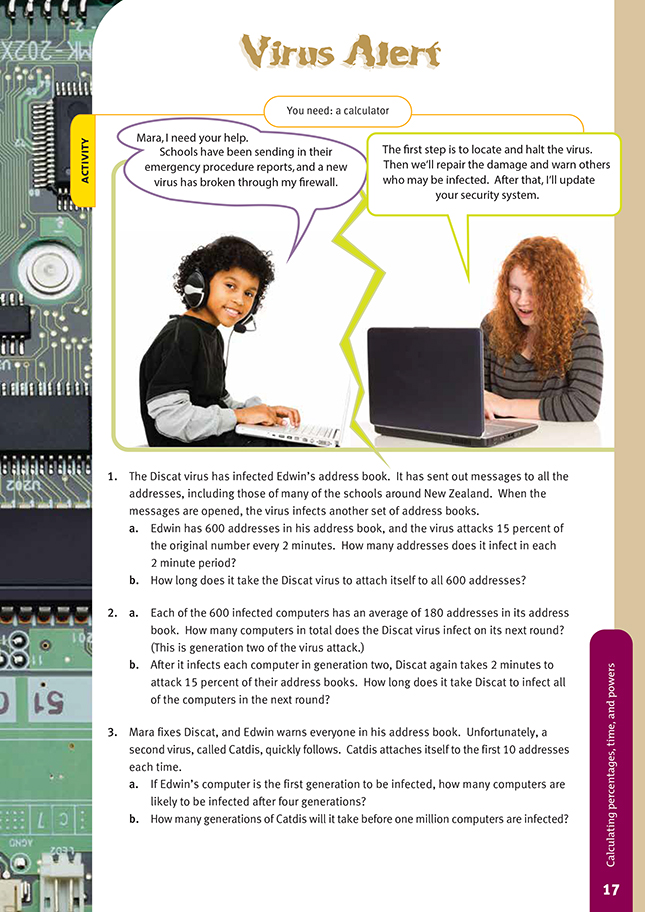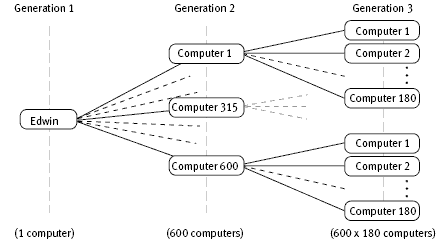This is a level 4 number activity from the Figure It Out theme series.
A PDF of the student activity is included.
Click on the image to enlarge it. Click again to close. Download PDF (217 KB)
find a percentage ofa number
draw a diagram to show the population
solve problems involving percentages and time
FIO, Levels 4-4+, Theme: Disasters Strike!, Virus Alert, page 17
A calculator
Other mathematical ideas and processes
Students will use simple models that simulate growth of a population or the spread of information through a community.
Activity
This activity provides the opportunity for some lively classroom discussion centred around the meaning of percentages. For example, 15 percent of Edwin’s 600 addresses is 600 x 0.15 = 90. This is the number of computers infected every 2 minutes. The total time taken to infect all 600 computers is found by calculating
how many units of 90 there are in 600: 600/90 = 6.666. Therefore, the time taken is 6.666 x 2 = 13.333 minutes or 13 minutes and 20 seconds (0.3333 x 60 = 20).
Now the problem gets interesting. If each of the 600 infected computers sends the virus to another 180 computers, the virus then infects 600 x 180 = 108 000 computers. A tree diagram will help the students see this.
When the virus gets to the 600 computers listed in Edwin’s address list, it works on each of these computers at the same time. So we need only to find the time it takes to infect the 180-member address list of one of these computers.
We are told that it again takes 2 minutes to infect 15 percent of the address list. Because this is the same percentage as before, it will take exactly the same length of time to infect a list of 180 addresses as it did for Edwin’s list of 600: 13 minutes and 20 seconds. Some students will be puzzled by this, so let’s calculate it. 15 percent of 180 = 27 and 180/27 = 6.666. So the time taken to infect all 180 addresses on the list is 6.666 x 2 = 13.333 minutes, or 13 minutes and 20 seconds. The point is that, in both cases, it takes 2 minutes to attack the same percentage (15 percent) of each list. It doesn’t matter if the lists are of different lengths; the percentage is the same, so the overall outcome is the same.
In question 3, we have a virus that spreads exponentially. Every infected computer infects another 10 computers. The first generation starts with 1 computer. It infects 10 computers. Each of those 10 computers infects another 10, which is 10 x 10 = 100. Each of the 100 computers infects 10 computers: 10 x 100 = 1 000. Adding all these up gives 1 + 10 + 100 + 1 000 = 100 + 101 + 102 + 103. The sum of
computers infected after n generations is 100 + 101 + 102 … + 10n-1 – 1. It takes 7 generations before Catdis
has infected a million computers.
Answers to Activity
1. a. 90
b. 13 min 20 s
2. a. 108 000 computers
b. 13 min 20 s
3. a. 1 111 computers (1 + 10 + 100 + 1 000)
b. Seven generations (106 + 105 + 104 …)

